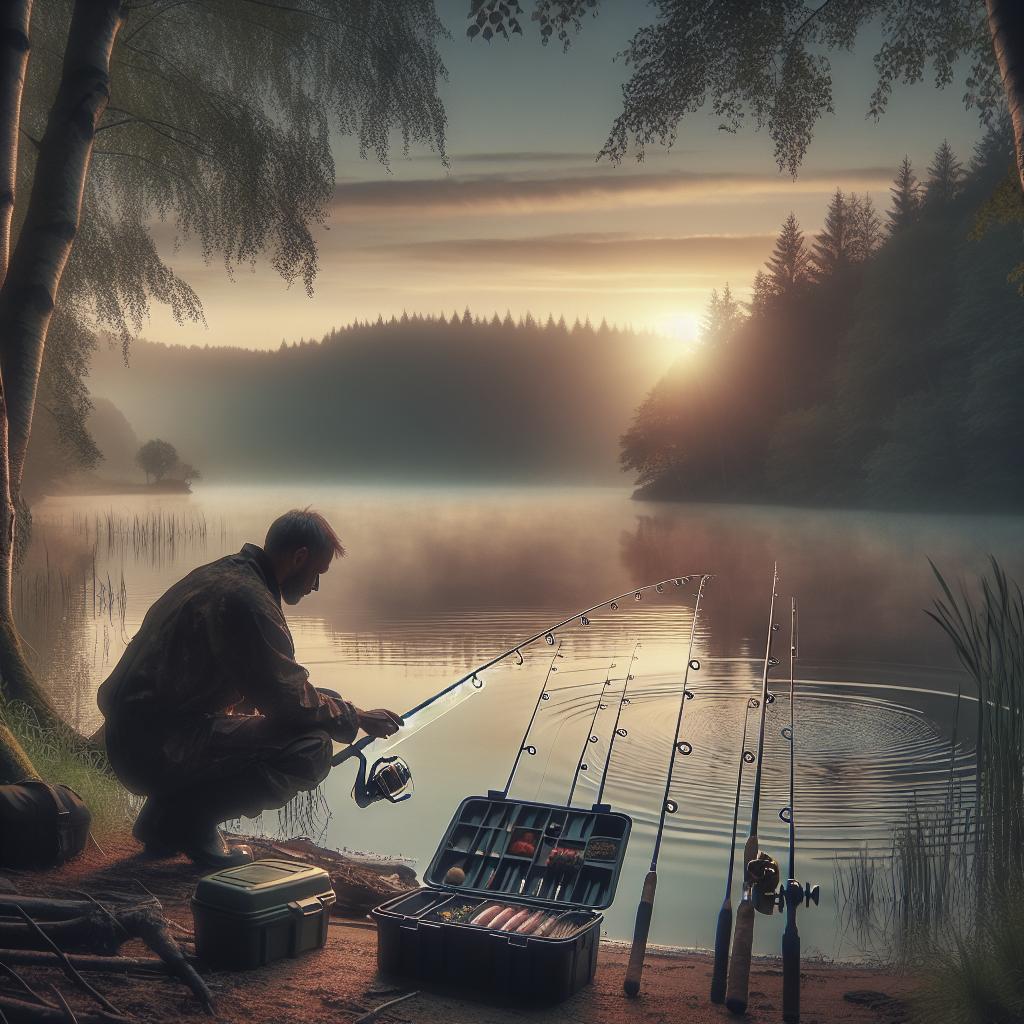“`html
How to Cast a Fishing Line Accurately
Casting a fishing line accurately is a skill that every angler aspires to master. Whether you are a beginner or an experienced fisherman, understanding the nuances of a precise cast is crucial to improve your fishing results. This guide breaks down key elements such as accuracy, the choice of bait, positioning, and equipment handling. From exploring different types of bait and distances to understanding rod-tip positioning, each section provides practical insights into the art of casting. By honing these techniques, you’ll enhance your chances of a successful catch. Follow along to deepen your understanding of this essential fishing skill and ensure your next fishing expedition yields excellent results.
Accuracy
Accuracy in casting a fishing line begins with understanding your equipment and developing a refined technique. It is essential to familiarize yourself with your rod and reel, getting comfortable with their weight, balance, and flexibility. Practice is key; spend time perfecting your grip and stance until it feels second nature. Pay attention to your posture, how your body rotates during the cast, and how your arm propels the line forward.
Wind conditions play a significant role in accuracy. On windy days, casting with the wind instead of against it can help maintain control. You can also adjust your casting technique by using a sidearm motion to combat strong winds, keeping the line low and minimizing its exposure to gusts. Remember, accuracy stems from consistent practice, patience, and adjusting your technique to different fishing environments.
Type of Bait, Tow, and Drift
The choice of bait significantly impacts the success of your fishing line’s accuracy. Different baits come with unique weights and dimensions. When casting, consider how these variations affect the line’s motion through the air. Lighter baits may need a more delicate touch, while heavier ones require more force behind the cast to travel further.
Towing and drifting are tactics that influence fishing accuracy. Towing involves moving the bait by reeling it in or pulling it against the water current. Meanwhile, drifting consists of allowing the bait to move naturally with the current. Understanding how each technique interacts with your bait type and environment will equip you with better control over your casts and improve your chances of a successful catch.
Hookbait Positioning
Positioning your hookbait correctly is crucial to attracting fish and ensuring a successful catch. The natural appearance of the bait underwater can make a significant difference. It’s essential to match your hook size and design to the bait, making sure it moves naturally and doesn’t inhibit the bait’s intended motion.
Additionally, understanding the feeding habits of your target fish species will guide your hookbait positioning. Different species feed at various depths and may require specific bait presentations. Observing and adjusting the position of the hookbait can ensure it’s visible and attractive to the fish, increasing your chances of hooking them successfully.
Distance and Depth
The ability to cast over a precise distance is a crucial part of fishing accuracy. When aiming for specific distances, take into account factors like the line’s weight, the bait’s size, and current conditions. Use a marker or set a specific target on the water to help visualize the intended landing spot of your bait.
Depth adjustment is also essential. Depending on where the fish are located, you’ll need to adjust your casting technique to reach the desired depth. Mastering these adjustments ensures that your bait is always presented effectively within the fish’s vicinity, enhancing the likelihood of a bite.
Variation in Depth
Fishing success often hinges on your ability to adapt to variations in depth. Fish can inhabit different water levels based on the time of year, water temperature, and food availability. Experiment with different weights and float options to maintain your bait at the right depth.
Additionally, consider using a depth finder or sonar equipment to accurately gauge the underwater terrain. Being aware of the aquatic landscape and adapting your strategy accordingly will ensure your bait maintains its appeal and effectiveness at the required depths, improving your overall fishing results.
Rod-Tip Positioning
Proper rod-tip positioning is integral to casting accuracy and ensuring effective bait presentation. Ideally, your rod tip should align with your target trajectory, enhancing control and precision. This alignment allows for a smoother release of the line and minimizes obstructions that could arise from incorrect posturing.
When retrieving or setting the hook, maintain a steady rod-tip position to ensure consistent contact with the line. This helps detect any sudden bites or movements, enabling immediate reaction and increasing the probability of successful fish capture.
Feel the Donk
“Feeling the donk” refers to sensing the bottom of the waterbed through the fishing line once the bait has made contact. This sensation is crucial for understanding the underwater environment and deciding subsequent actions. Feeling the donk gives you insights into the type of terrain—whether it’s rocky, sandy, or has vegetation.
Practicing this technique provides valuable information and adjusts your casting strategy according to the feedback from the line. Use this feedback to modify your retrieve speed or alternate the bait’s presentation, which will enhance effectiveness and possibly lead to a greater fishing success rate.
Summary of Main Points
| Topics | Details |
|---|---|
| Accuracy | Understanding equipment and technique; practice to handle wind conditions. |
| Type of Bait, Tow, and Drift | Impact of bait weight and fishing techniques like towing and drifting on accuracy. |
| Hookbait Positioning | Properly matching hook size to bait; adjust according to fish feeding habits. |
| Distance and Depth | Targeting specific distances and depths for effective bait presentation. |
| Variation in Depth | Adapting to environmental changes and maintaining effective bait depth. |
| Rod-Tip Positioning | Optimal alignment for accuracy and quick responses to bait movement. |
| Feel the Donk | Using feedback from the fishing line to understand underwater terrain. |
“`


